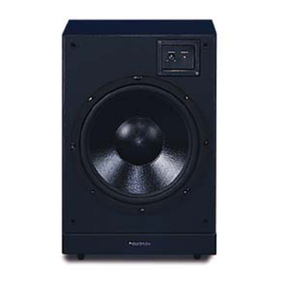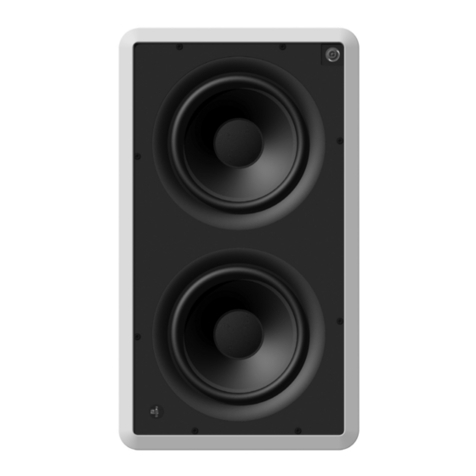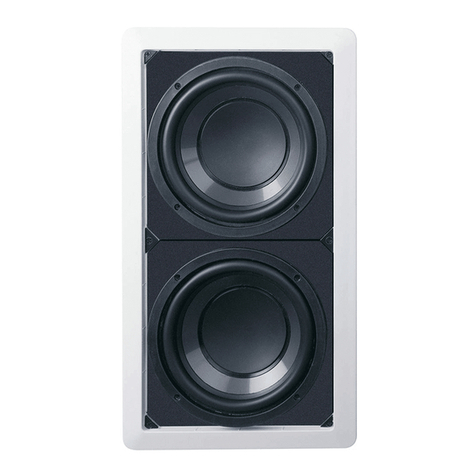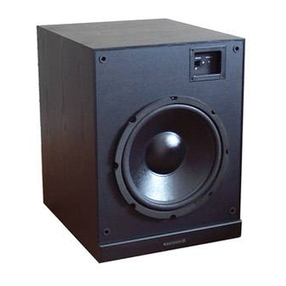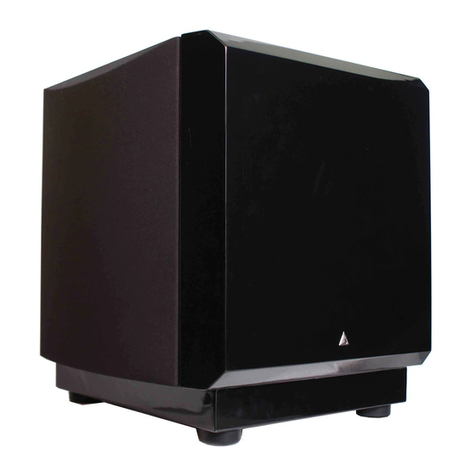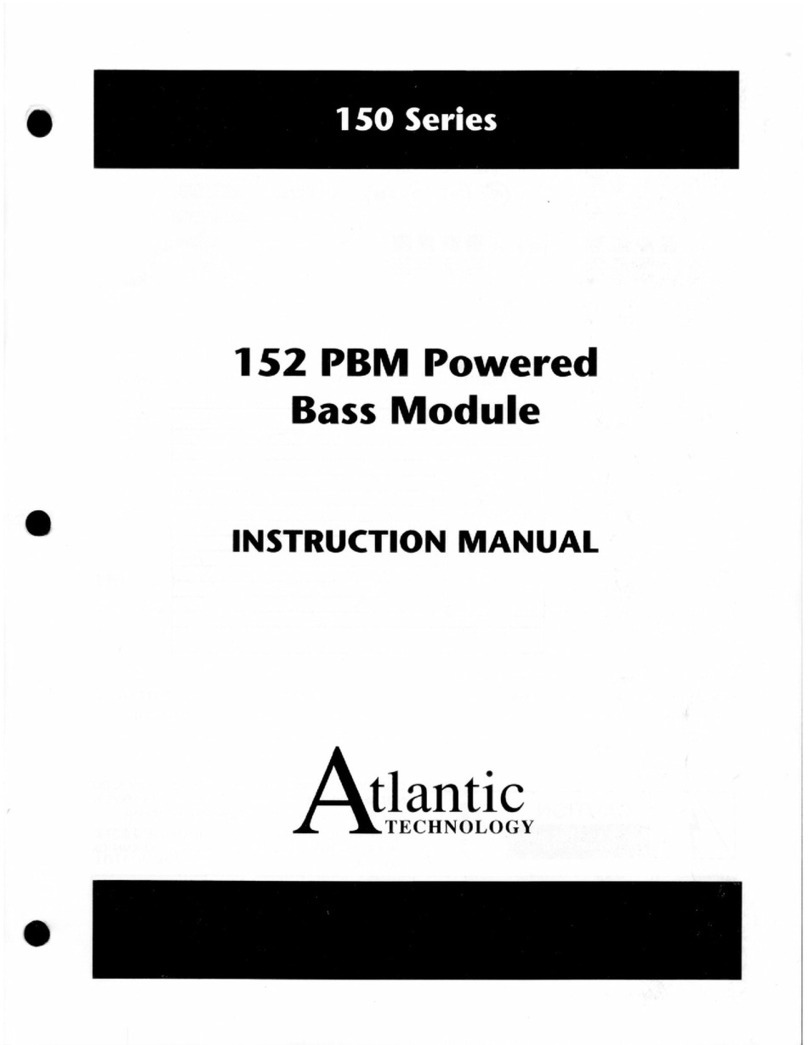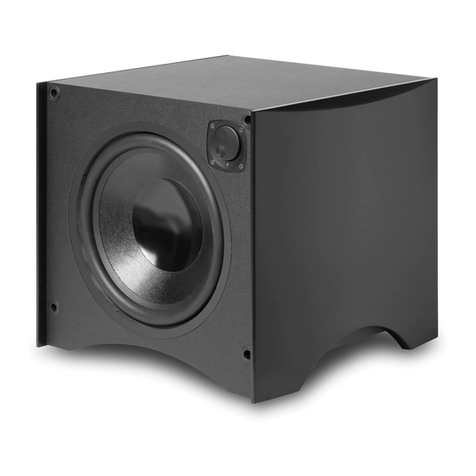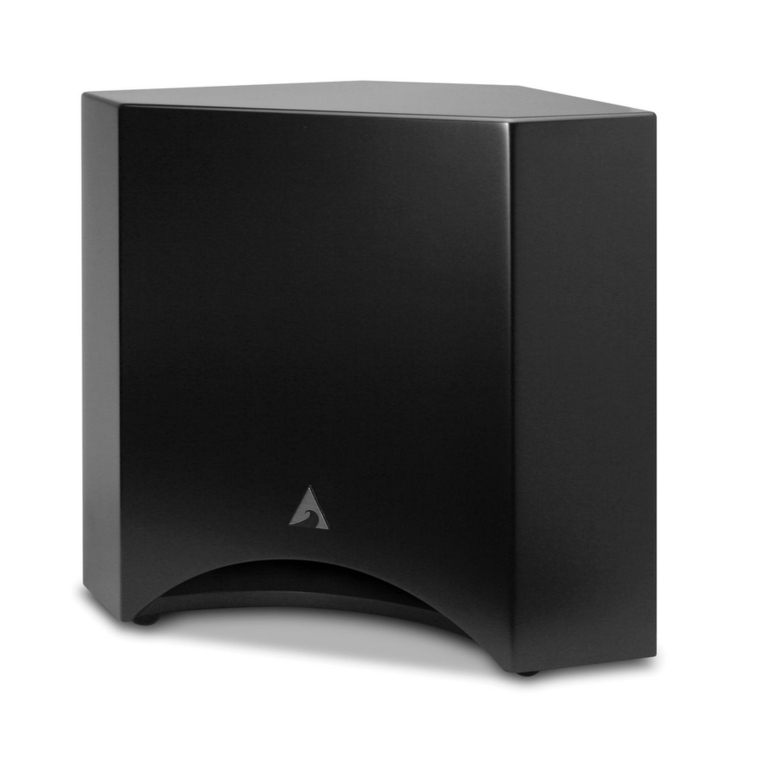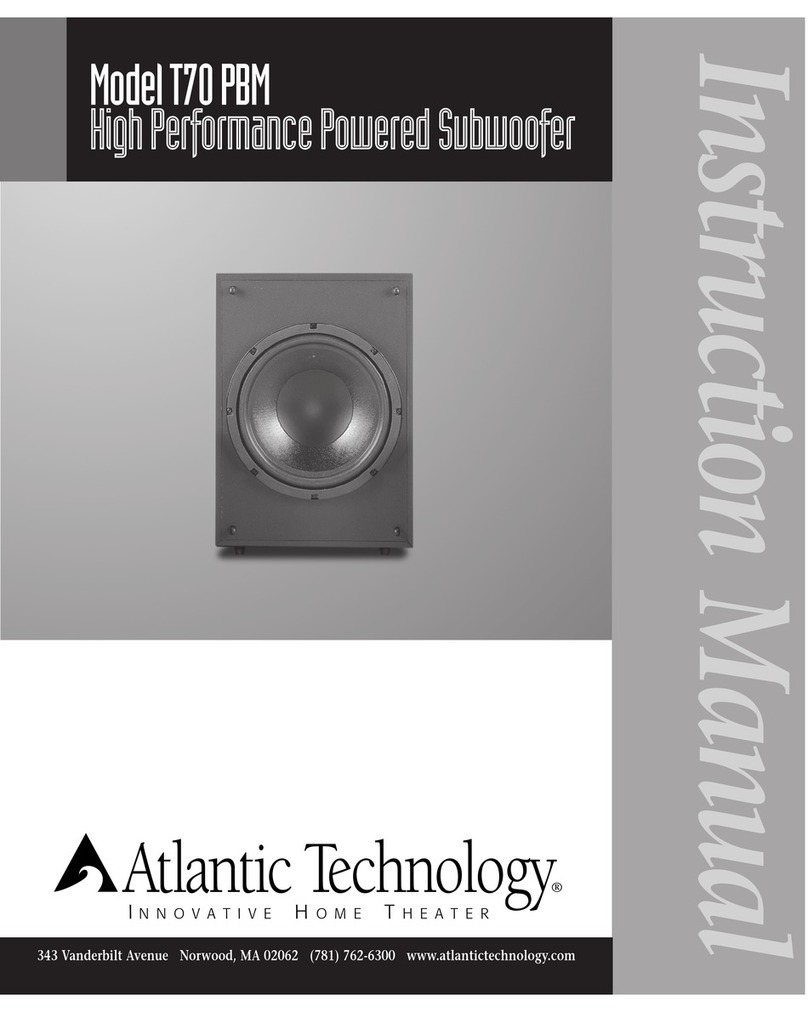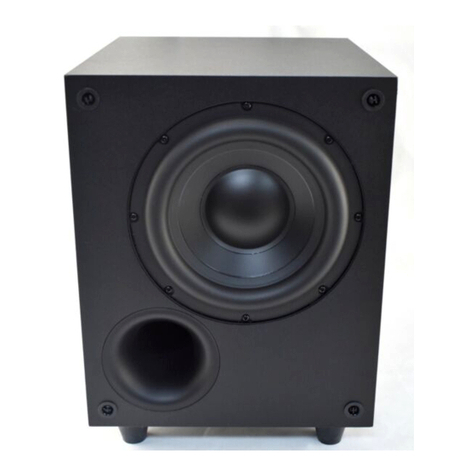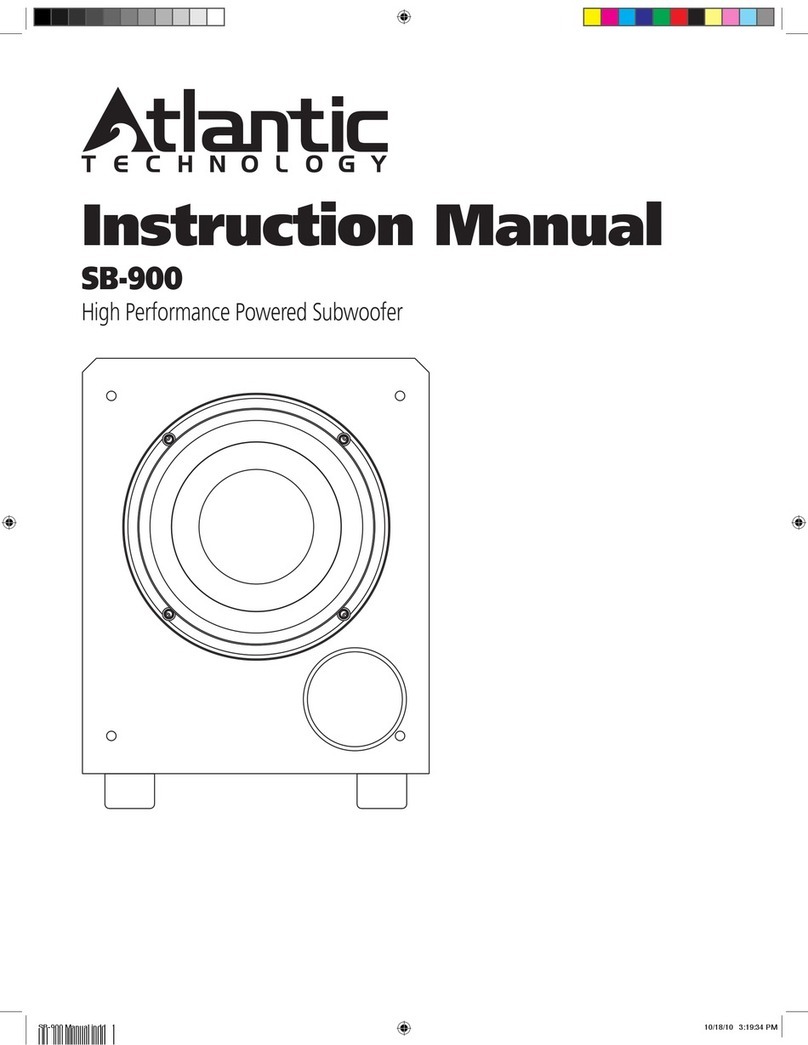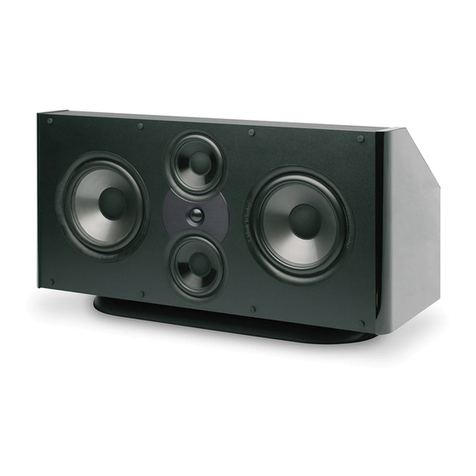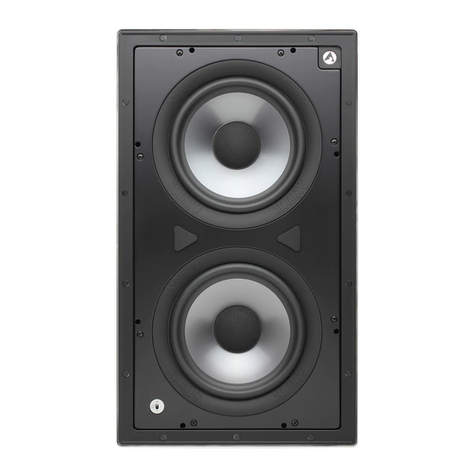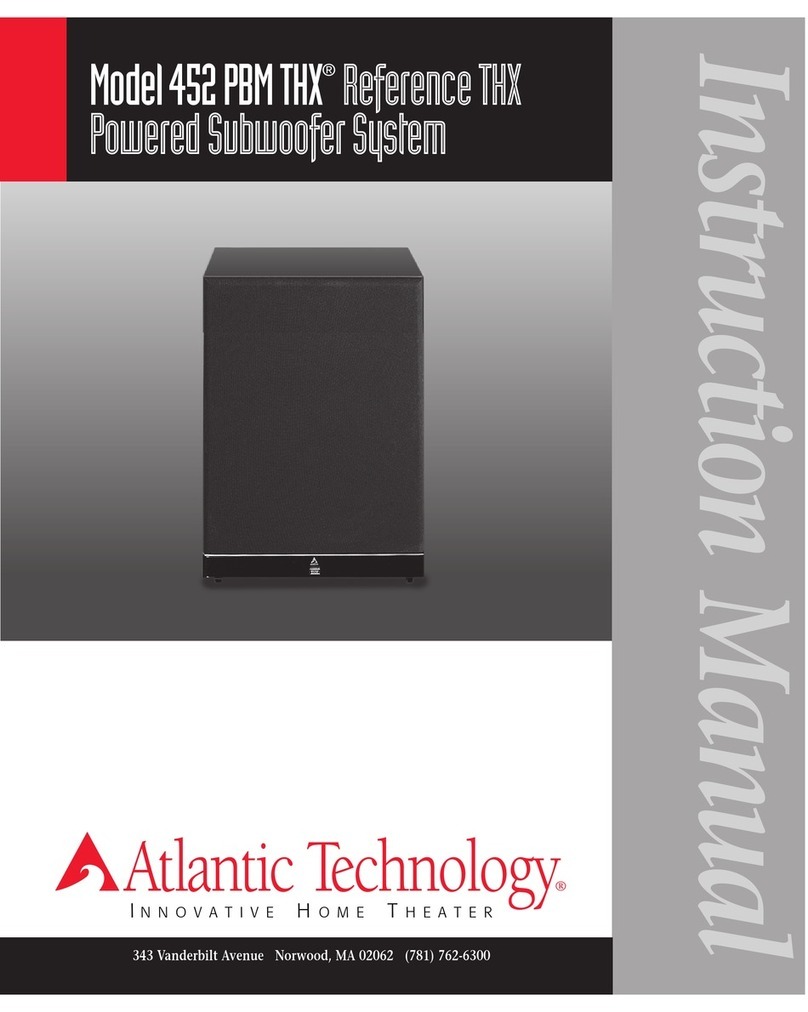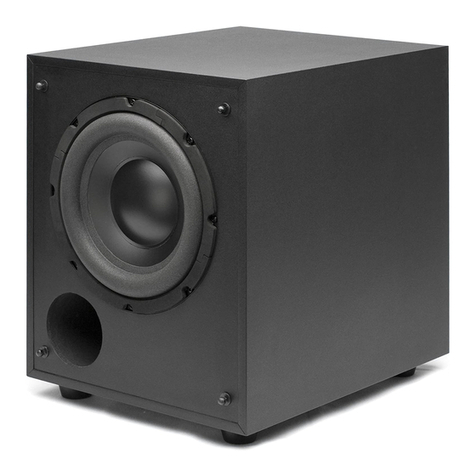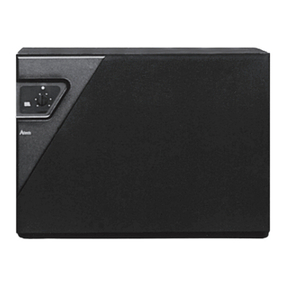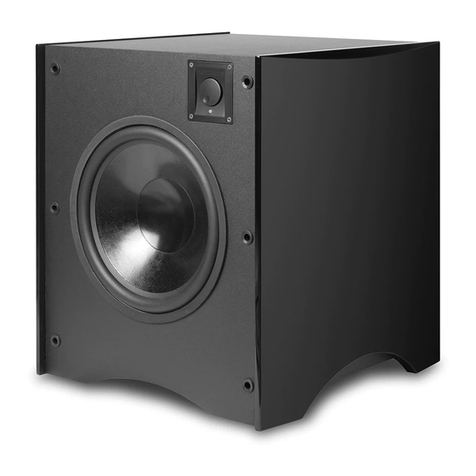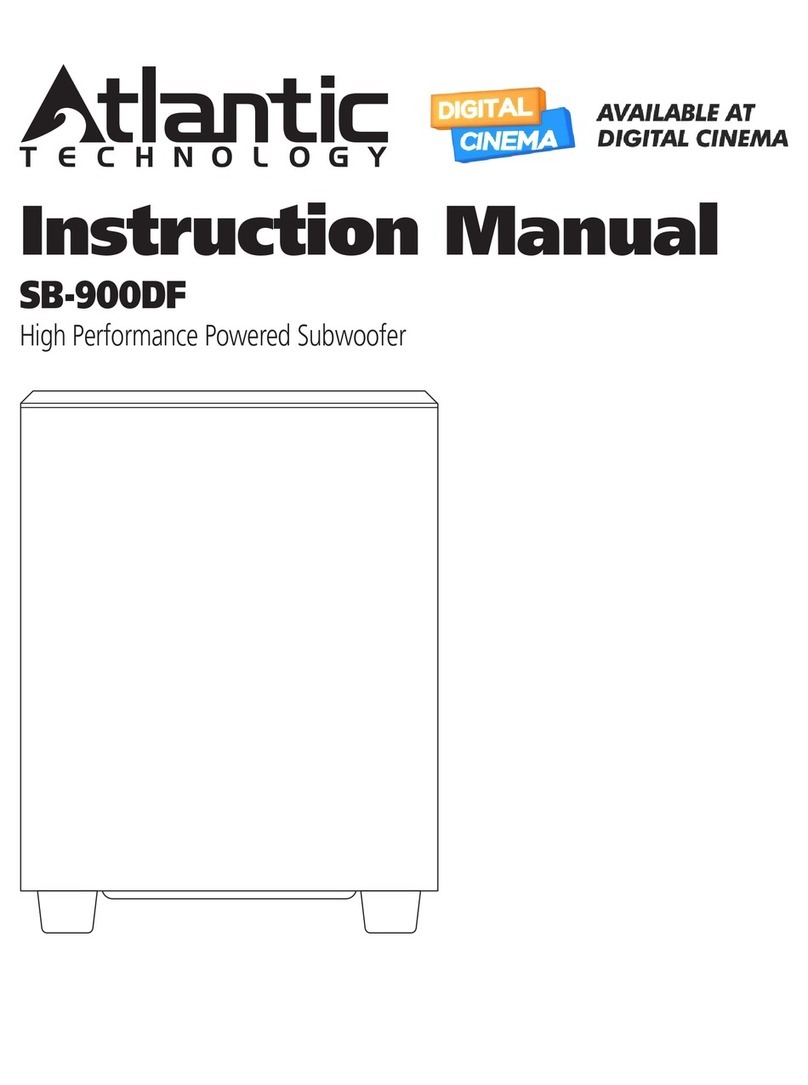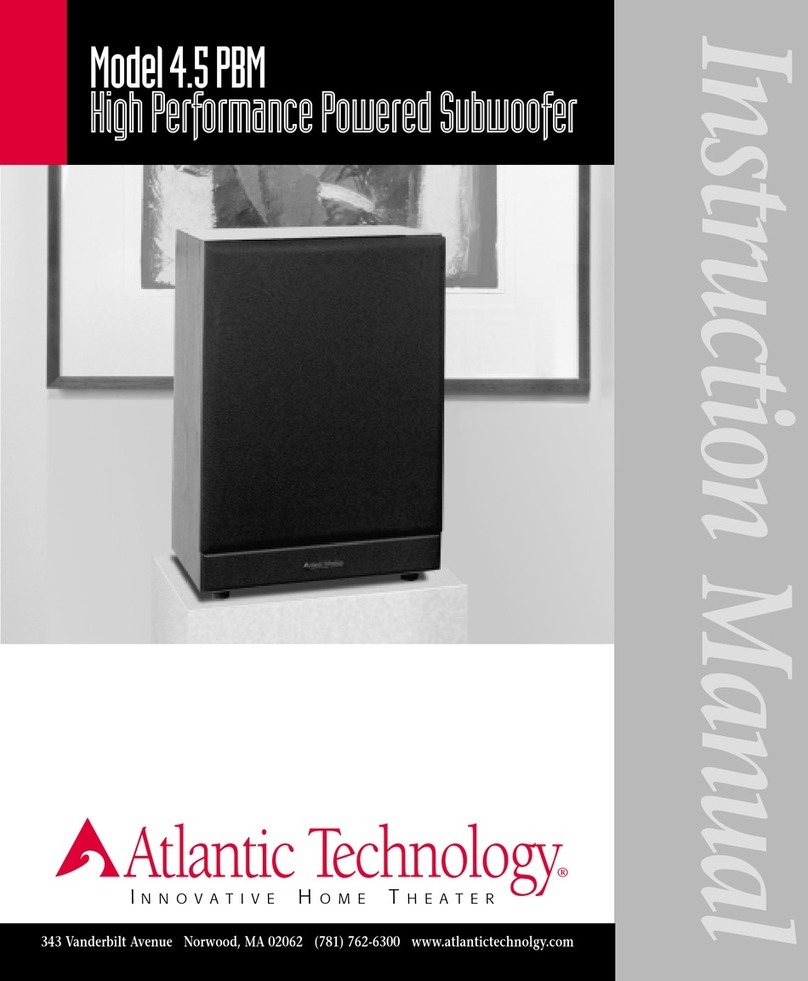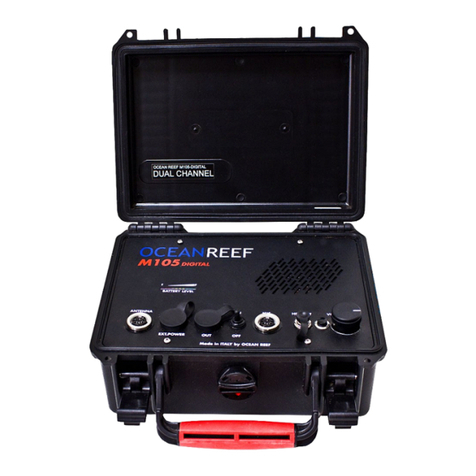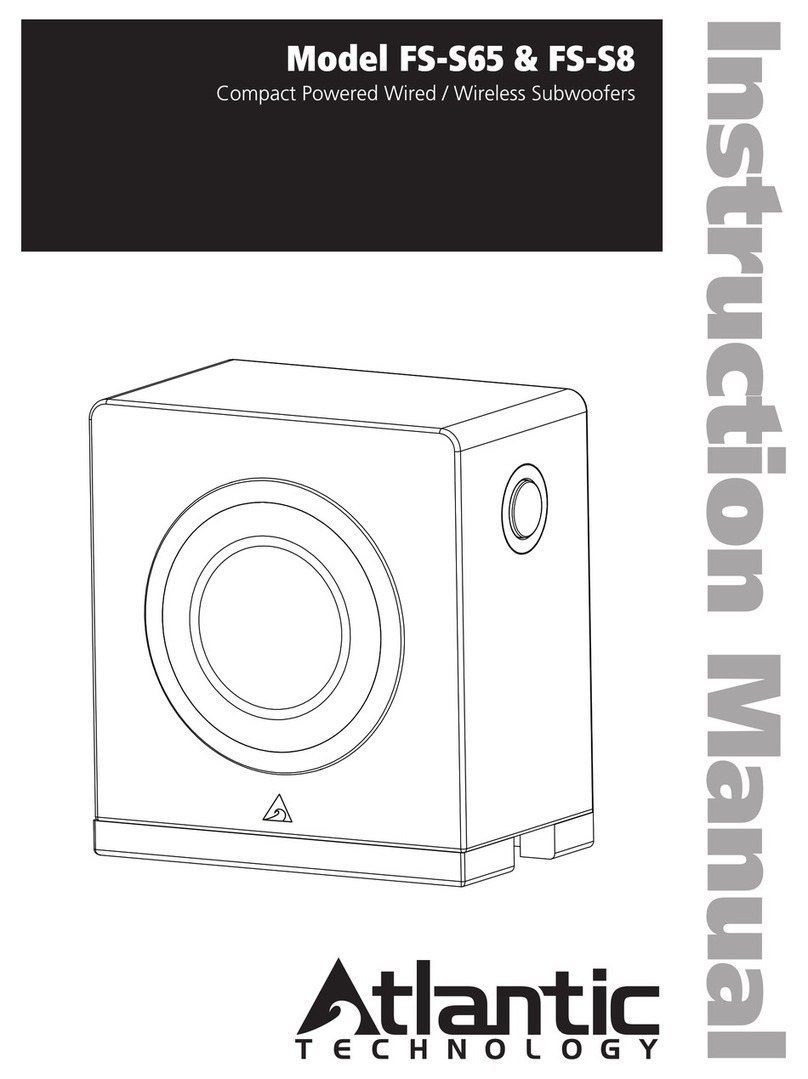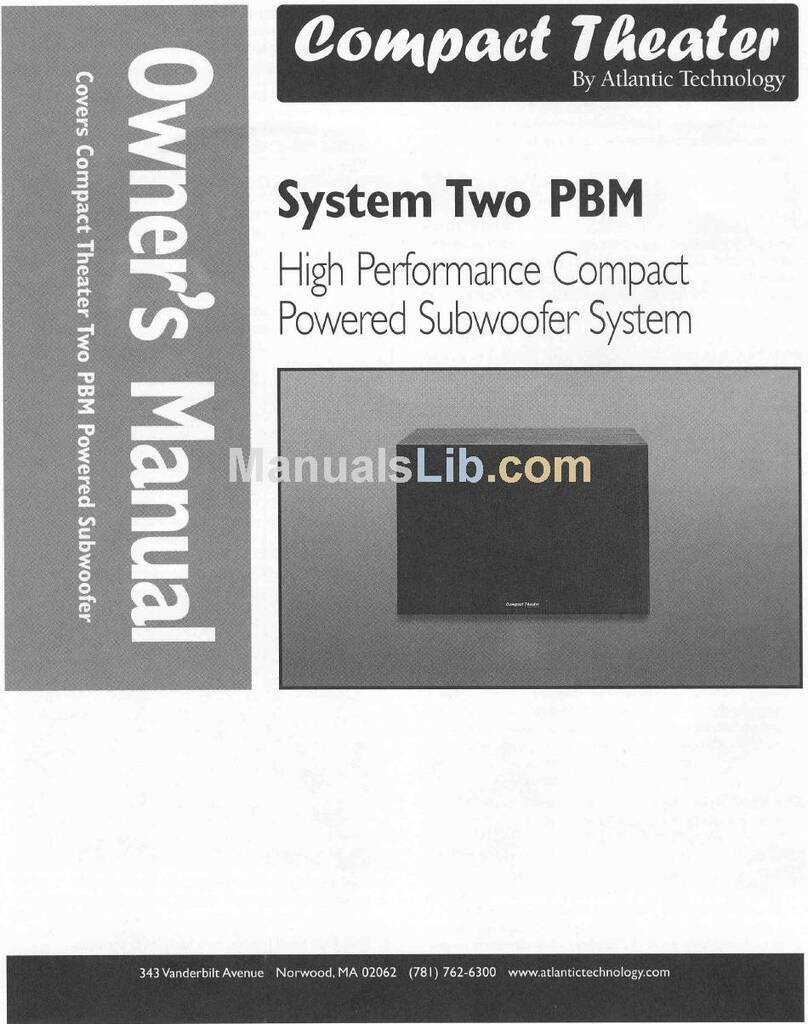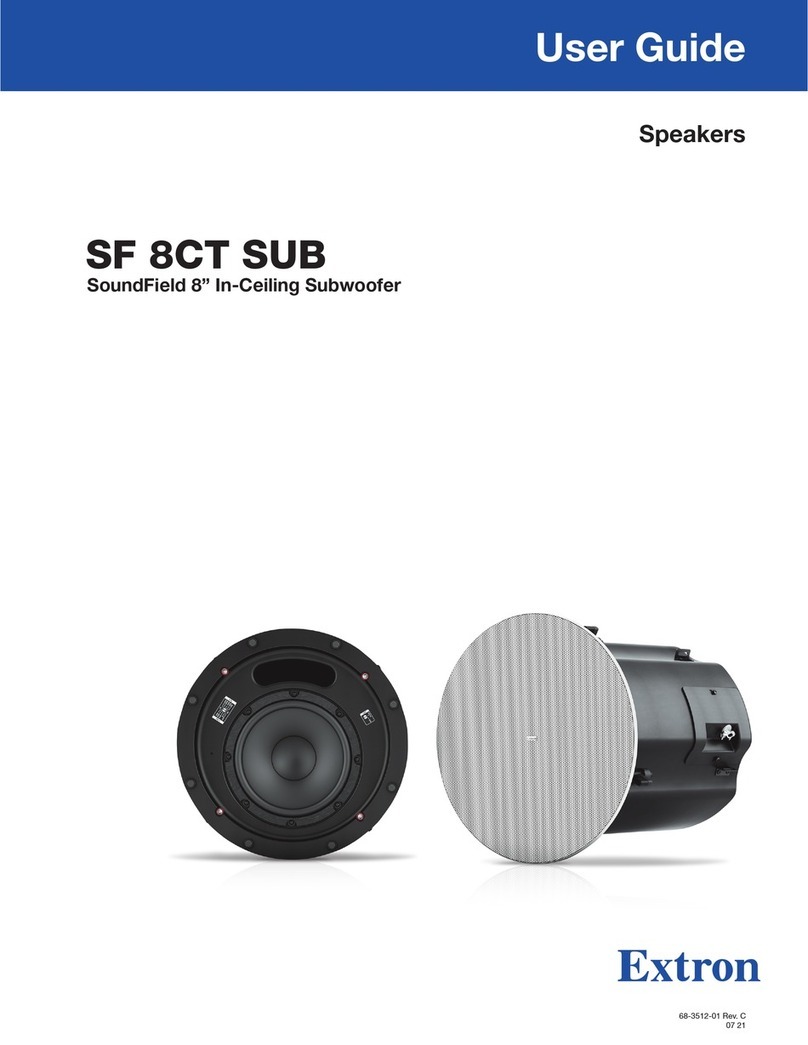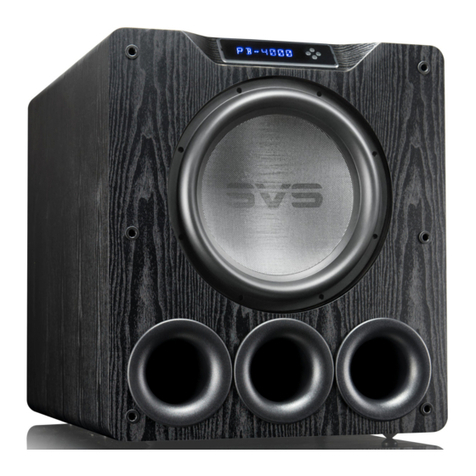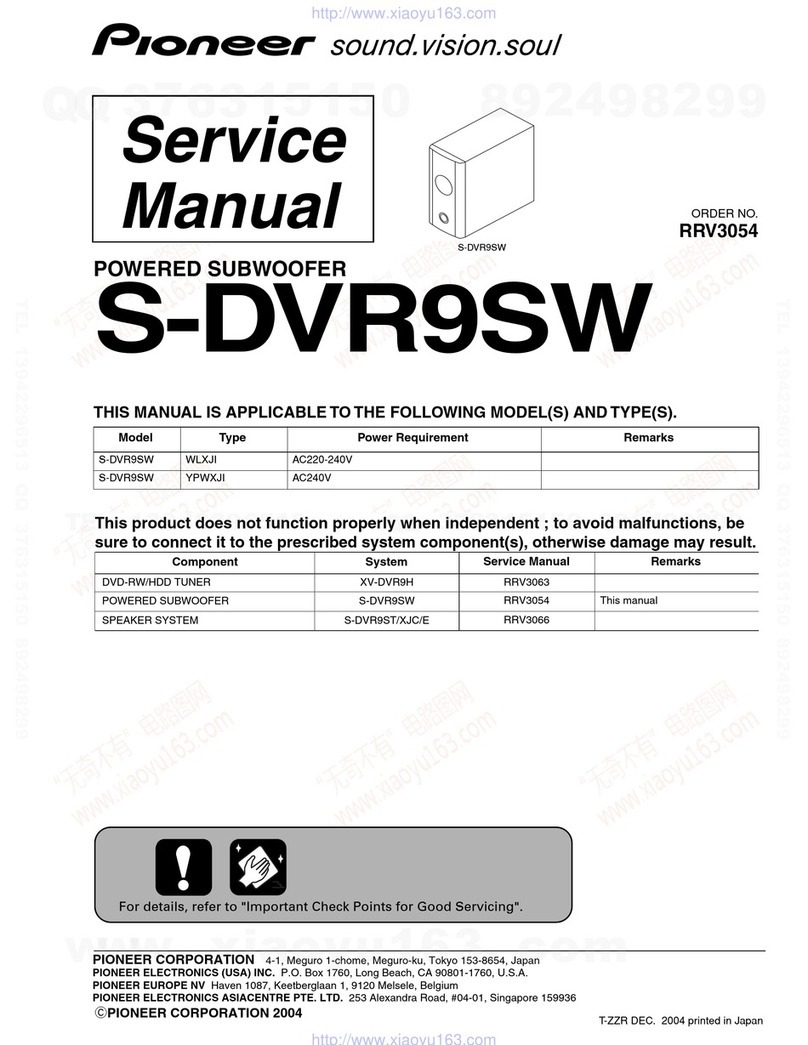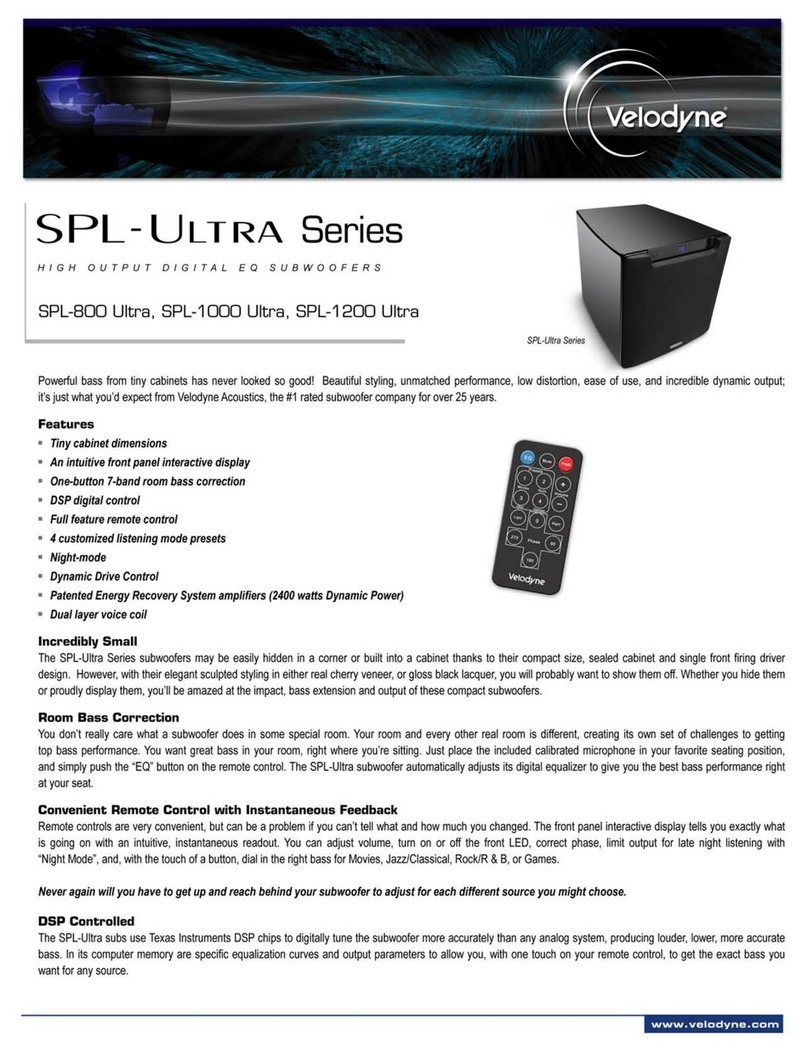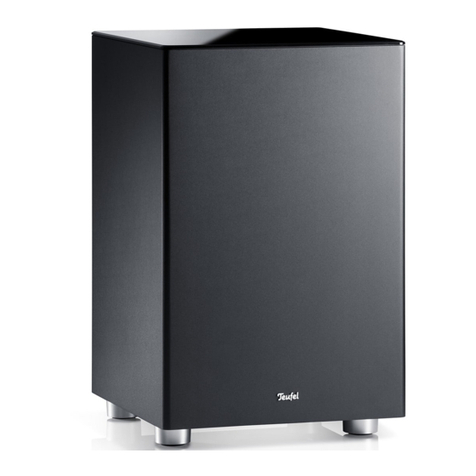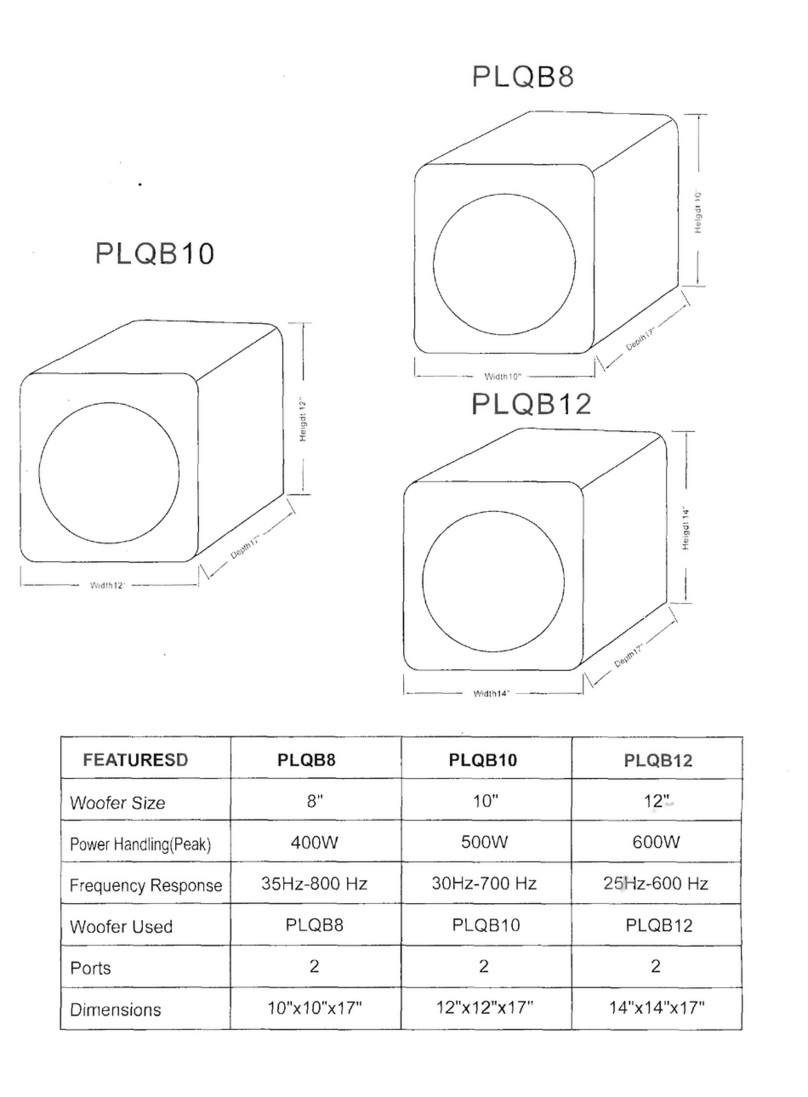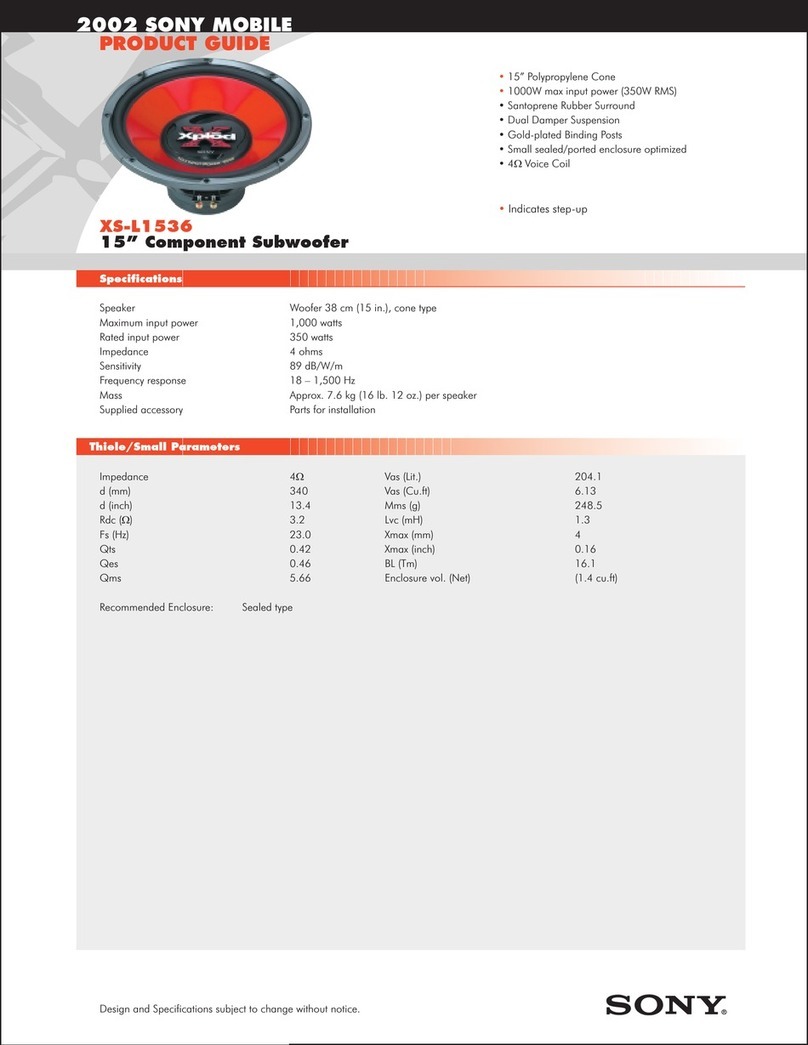○○○○○○○○○○○○○○○○○○○○○○○○○○
10
○○○○○○○○○○○○○○○○○○○○○○○○○○
Model 4.5 PBM
Using the Subwoofer Lo-Pass Control
Start with the Lo-pass control of the 4.5 PBM set at the middle. Play some music with a range of bass
notes from low to high. If the bass in the transition region between the subwoofer and satellite
spea ers is thin sounding, increase the Lo-pass setting by turning the nob cloc wise. Alternately, if it
is too full-sounding, decrease the setting by turning the nob counter-cloc wise. The goal is to
optimize the performance of the system by ensuring that the subwoofer and satellites produce a
cohesive and well integrated sound “picture.” The low frequency response of the System 4.5 satellites
has been optimized to wor with approximately a 120 Hz crossover point. This provides maximum
performance and smooth integration with a dedicated subwoofer.
In general, higher crossover frequencies tend to sound boomy and are more easily localized to the
subwoofer. Higher crossover frequencies may be suitable, however, when using very small satellites
that have no real low frequency performance. Settings lower than 120 Hz should be employed if you
are using larger spea ers that have extended bass response. This way, the subwoofer will only
reproduce the very lowest bass frequencies that are in the range where the large main spea ers begin to
roll off. It’s generally undesirable to have the main spea ers and the subwoofer overlap too much.
Larger spea ers means a lower lo-pass crossover frequency, smaller spea ers means a higher lo-pass
crossover frequency. Consult the manufacturer’s specified low frequency response for your main
spea ers to determine the appropriate low-pass setting on your subwoofer.
The Phase Invert Mode
A subwoofer operating out of phase with the rest of the system will not provide optimum low
frequency performance. Also, the correct subwoofer phase can enhance room acoustics. Since there is
so much variation in the industry regarding phase, and no standards have been established, a switch
that will reverse the phase of the subwoofer is provided on the subwoofer amplifier’s rear panel. Listen
to a monaural musical source with strong bass content. (For example, you can use the mono switch on
an FM tuner or preamp, or use a Y-connector on the outputs of one of your source components to get a
mono signal.) Experiment with the position of the phase switch to get the most extended bass. It
should be obvious which is the correct setting. In particular, there will be a smother more integrated
transition between the satellites and the subwoofer when they are properly phased.
A Word About Center Channel Modes and Small/Large” Speaker Settings
Many Dolby Pro Logic surround processors and surround receivers feature a “Wide” and “Normal”
mode for the center channel spea er. Atlantic Technology recommends that the center channel be
operated in the “Normal” mode when using a powered subwoofer. At this setting the center channel
spea er will sound more dynamic and the intelligibility of the system will generally be improved.
With the newer discrete digital systems (Dolby Digital AC-3, etc.) most controllers provide the option
of operating the front and rear spea ers in a limited bandwidth (Small) or full range (Large) setting.
When using the 4.5 PBM with System 4.5 spea ers, we recommend using the high level spea er
connections and setting the controller to the “Small” position for the center and surround spea ers
and the “Large” position for the left and right spea ers.
Care and Feeding of Your Subwoofer
The 4.5 PBM is constructed from 3/4" MDF, a non-resonant material ideal for spea er system
enclosures. The outside of the woofer is layered with a high quality Blac Oa finished vinyl laminate.
To clean the cabinet you may use a soft cloth either dry or slightly dampened with clean water. Be
careful not to wet the cabinet or allow any water to enter the cabinet seams.
